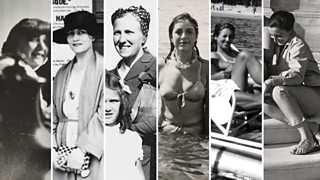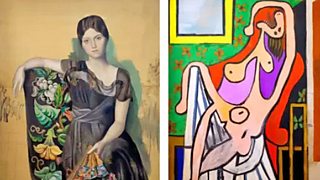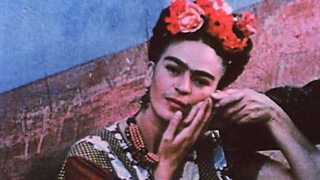Picture perfect: Cinema's best scenes selected by Lost in Translation director Sofia Coppola
2 December 2021
American Oscar-winning screenwriter and director Sofia Coppola discusses her Life Cinematic with Edith Bowman. Read on to discover which contemporary cult classics and vintage Hollywood greats the director has picked as perfect movie moments.


-
![]()
Life Cinematic with Sofia Coppola
Watch Sofia Coppola talking movies with Edith Bowman on ���˿��� iPlayer until 2 January 2022.

10 Perfect Movie Scenes selected by Sofia Coppola

Perfect Performance - Nicole Kidman in To Die For (1995)

Nicole Kidman is just one of the most incredible actors… the way she inhabits the character, it’s one of my favourite performances.Sofia Coppola
After moving to the U.S. from her native Australia, and feeling “shocked at how few complicated roles there were for women”, Nicole Kidman fought hard for the role of the seductively villainous Suzanne Stone, an aspiring TV news reporter who will stop at nothing to fulfil her ambitions. Kidman convinced director Gus Van Sant to cast her, and her multi-layered performance earned a Golden Globe.
Van Sant said, “I’d seen Nicole in Dead Calm...and the movies she’d done with Tom Cruise. None really indicated that she was right for this movie. But she was so excited and forthright… She said she was destined to play this part. I thought, ‘If she’s this into it, she’ll probably do a really good job.”


Repressed Emotion - Trevor Howard and Celia Johnson in Brief Encounter (1945)

A big inspiration when I was writing Lost In Translation. Very little is said, and you feel so much in just a gesture or a pause. Everything is under the surface... very English.Sofia Coppola
In David Lean’s 1945 masterclass in restraint and repressed emotion, Laura (Celia Johnson) and Alec (Trevor Howard) are married to other people but develop an intense relationship after a chance meeting.
This scene, in the refreshment room of the local train station, takes place early on in the film and is returned to near the end, after the couple’s story has been revealed to the audience.
The dialogue throughout the scene - largely the inconsequential chatter of the uninvited casual acquaintance - cannot distract from the intensity of the non-verbal emotion that is playing out as the couple’s feelings are revealed through gestures and facial expressions.


Moment of Realisation - Wong Kar-wai's In The Mood For Love (2000)

In the restaurant, where they start to figure out what’s going on with their spouses, it’s revealed in little doses and it starts to all come together.Sofia Coppola
Wong Kar-wai’s masterpiece is a story of betrayal, longing and unrequited love set in a socially conservative, early 1960s Hong Kong.
After numerous casual interactions, and with both of them silently suspecting their respective spouses of infidelity, neighbours Su (Maggie Cheung) and Chow (Tony Leung) meet at a restaurant. Tentatively they ask seemingly innocent questions, slowly revealing the heartbreaking information that confirms the other's suspicions.
The sudden and unusual camera movements in this scene act as visual double-takes, demanding our attention and signposting these dramatic yet calm moments of realisation.
Sofia thanked Wong Kar-wai in her 2004 Academy Award acceptance speech (for Lost In Translation), citing him as an inspiration while writing her script.
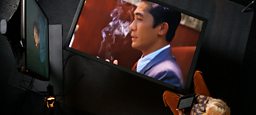

Outsider Character - Montgomery Clift in A Place In The Sun (1951)
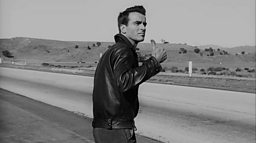
I love this moment - him coming in and this is not his world. Nobody greets him, he’s such a fish out of water, your heart goes to him.Sofia Coppola
A dark take on the American dream, and a film that Charlie Chaplin once called “the greatest movie ever made about America”.
George Stevens’ Hollywood classic follows working-class George Eastman (Montgomery Clift) as he slowly climbs the corporate ladder, striving to be accepted into the world of socialite Angela Vickers (Elizabeth Taylor).
This scene drips with visual signifiers of Eastman’s outsider status - at the party he is the only person to arrive without a hat; he wears a tie instead of a bow tie; his fellow guests appear to wave at him but their greetings are directed at people out of shot; the camera remains passive and objective as he enters the party, depicting him as a small, insignificant figure in wide shot.
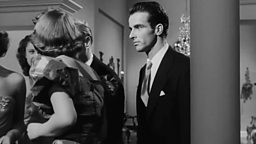


Perfect Casting - Katie Jarvis and Michael Fassbender in Fish Tank (2009)

You don’t feel like you’re watching actors, you are just in this world with these real people.Sofia Coppola
For Andrea Arnold’s Bafta-winning second feature, Katie Jarvis was street-cast to play teenager Mia after being spotted arguing with her boyfriend at a train station.
With the script written from Mia’s point of view and with cinematographer Robbie Ryan’s self-operated camera following her through every scene, Jarvis’s natural, authentic performance provides a powerful sense of realism.
Arnold believes the casting of her, as a newcomer alongside a more experienced Michael Fassbender, had a tangible effect - “When Katie behaves very naturally, that kind of influences everyone around her. And I think Katie learned loads off of Michael. He was really great with her.”



Sound Design - Antonioni's La Notte (1961)
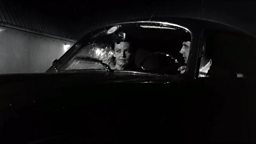
The whole scene happens without the dialogue - we're outside in the rain and only see the whole scene, yet we know exactly what's going on… Two people talking would have been less interesting.Sofia Coppola
Depicting a day in the life of an unhappily married couple and their steadily deteriorating relationship, La Notte is the centrepiece of what was dubbed Michelangelo Antonioni’s “trilogy of alienation”.
In a film which explores the inability to communicate, Antonioni’s decisions regarding sound in this scene are bold, with him choosing not to allow us to hear Lidia (Jeanne Moreau) communicating enthusiastically with a man she just met at a party.
Emphasising the audience's role as a spectator, we do not hear the conversation of these characters as we would conventionally expect to... instead we only hear the rain on the outside of the car.
It’s an example of Antonioni’s attempt to tie cinema “to the truth rather than to logic”. Sofia uses a similar technique of keeping communication private in Lost In Translation, when we don’t hear what Bob (Bill Murray) whispers to Charlotte (Scarlett Johansson) at the end of the film.


Bonus Clip: Lost in Translation's ending

Sofia Coppola explains Lost in Translation's ending
The director describes the much-debated scene between Bill Murray and Scarlett Johansson.

Set Design - Todd Haynes' Safe (1995)

She's in her suburban world and you really feel like she’s like an alien, she’s not connected to it. Too perfect and weird.Sofia Coppola
Carol White (Julianne Moore) is an affluent Los Angeles housewife whose monotonous life changes when she starts to suffer from a mysterious, debilitating illness.
Director Todd Haynes has said the films of Stanley Kubrick inspired Safe’s set design, in particular 2001: A Space Odyssey.
Haynes wanted to give Carol’s environment the feeling of space and “recycled air… the natural being completely and totally removed from human existence.”
Before production starts on his films, Haynes compiles and circulates a lookbook of images to his team to communicate his visual intentions. Sofia employs a similar approach for her own films.


Character Introduction - Rita Hayworth in Gilda (1946)

She makes a big entrance because she’s Gilda, she enters the frame in this show-stopping way. It says so much about her.Sofia Coppola
In the film that propelled her into superstardom, Rita Hayworth makes an unconventional and truly unforgettable entrance as Gilda, the new wife of casino owner Ballin Mundson (George Macready), who clearly has history with Mundson’s new employee Johnny Farrell (Glenn Ford).
Director Charles Vidor and cinematographer Rudolph Maté had both collaborated with Hayworth previously, and their knowledge and experience of working with her, combined with Hayworth’s on-screen presence, result in a perfectly conceived, skillfully framed and flawlessly executed entrance into the frame.
The impact of Gilda exploding upwards to fill the empty frame and bring it to life mirrors Hayworth’s explosion into popular culture, with references to her in films that span decades, including The Bicycle Thieves, The Shawshank Redemption and Mulholland Drive.


Perfect Kiss - Tina (Rosie Perez) and Mookie (Spike Lee) in Do the Right Thing (1989)

I love that it’s not a device. It's not anywhere else in the movie. It's just this one moment and it makes the kiss so much more.Sofia Coppola
Spike Lee’s 1989 classic takes place on a swelteringly hot day that sees racial tensions in Brooklyn reaching boiling point. Sofia describes this scene - which takes place slightly away from the main events of the film - as a ‘candy moment’; a playful pop-up occurrence in a film that happens once but doesn’t become a device.
Mookie (Spike Lee) delivers a pizza to his girlfriend Tina (Rosie Perez, in her first feature film) and, breaking a moment of mild confrontation, the couple kiss. Lee’s use of a repeat cut here is an unexpected visual tool that gives this intimate moment heightened impact and emphasis.
Speaking of the feeling of heat which is essential to the plot of the film, Spike Lee has said - “I wanted people to be sweating from watching this film... Everybody used their skills to convey that feeling of heat.” In this kiss scene, we see the enlarged silhouette of an electric fan behind Tina when she opens her door, she tells Mookie that it is too hot to have sex, there is an enormous Japanese style folding fan on the wall. There are constant, unmissable visual reminders of the need to cool down.


Power Dynamic - Dirk Bogarde and James Fox in The Servant (1963)
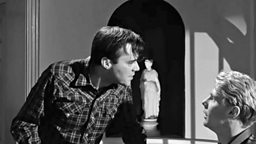
Dirk Bogarde is so good. Twisted, and funny, in a way that only Harold Pinter can be. His humour is so specific and embodies that power dynamic.Sofia Coppola
After spoiled young aristocrat Tony (James Fox) hires manservant Barrett (Dirk Bogarde) to look after him in his new Chelsea townhouse, the balance of power between the men begins to gradually shift.
As an American, director Joseph Losey was well-placed to provide a detached and dispassionate view of the British class system, and this film - adapted by playwright Harold Pinter from a novella by Robin Maugham - marked the first of three Pinter-Losey collaborations exploring class in Britain.
This particular scene marks a turning point in the film, with a child-like ball game acting as an explicit metaphor for the characters’ central conflict: “I’m in the inferior position”; “You’re sitting in the best position”.
The initial shot of Tony at the top of the stairs looking down on Barrett has been reversed by the end of the scene, with Barrett now peering down on Tony, demanding he fetch him a brandy.


Life Cinematic: Filmmakers select their greatest movie moments
-
![]()
Sam Mendes
Oscar-winning director Sam Mendes selects his 10 best film moments including the perfect shot.
-
![]()
Edgar Wright
Edgar Wright champions his favourite films in categories ranging from the Needle Drop to the Perfect Tension Build.
-
![]()
Sam Taylor-Johnson
Film-maker Sam Taylor-Johnson, director of Nowhere Boy and A Million Little Pieces, selects her favourite film moments.
-
![]()
Sophia Coppola
Contemporary cult classics and vintage Hollywood greats picked by the Lost in Translation director.
Inside Cinema on ���˿��� iPlayer: Short Films For Movie Fans
-
![]()
Roll Credits
This is the end, or is it? Celebrating the teasers, outtakes and other treats found in a film's credits.
-
![]()
Lord of the Rings
How Peter Jackson used both classic and cutting-edge techniques to craft his adaptation of Tolkien's epic fantasy trilogy.
-
![]()
Cary Grant
How a working class boy from Bristol became one of the brightest stars of the Golden Age of Hollywood.
-
![]()
Akira Kurosawa
From Seven Samurai and Rashomon to Yojimbo and Ran, the world-conquering films of master Japanese director Akira Kurosawa.
-
![]()
The Wilhelm Scream
How a sound effect conquered cinema, appearing in hundreds of films from the '50s to now.
-
![]()
Busby Berkeley-Land
How three films revolutionised musicals and brought sex and spectacle to the big screen.
-
![]()
The B Word
Just because cinema doesn’t feature loads of out and proud bisexuals in lead roles, doesn’t mean bisexuality doesn’t exist!
-
![]()
Boss Ladies
What does it take to shatter the glass ceiling and rule the boardroom on the big screen?
More from ���˿��� Arts
-
![]()
Picasso’s ex-factor
Who are the six women who shaped his life and work?
-
![]()
Quiz: Picasso or pixel?
Can you separate the AI fakes from genuine paintings by Pablo Picasso?
-
![]()
Frida: Fiery, fierce and passionate
The extraordinary life of Mexican artist Frida Kahlo, in her own words
-
![]()
Proms 2023: The best bits
From Yuja Wang to Northern Soul, handpicked stand-out moments from this year's Proms












